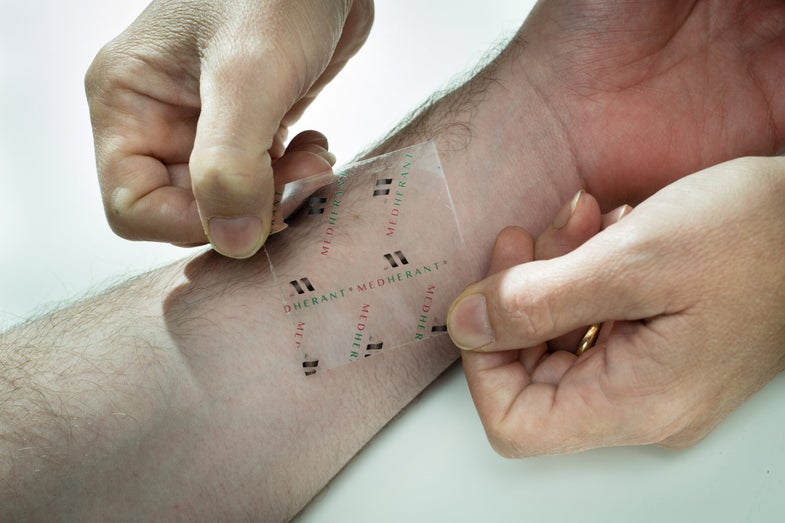A Skin Patch Of Ibuprofen Applies Medication Directly To Pain
More targeted relief

The University of Warwick in the United Kingdom and its spinoff company, Medherant, have created the first patch to deliver ibuprofen through the skin. The NSAID (non-steroidal anti-inflammatory drug) is used for pain relief and fever reduction, and is used as an anti-inflammatory. You can find it in pills like Advil and Motrin today, but in the future, you might be taking it in a more direct manner.
The transparent patch is made of a specially developed polymer matrix, which is sticky enough to adhere to skin despite its high drug content (up to 30 percent of the patch’s weight). For up to 12 hours, the patch can deliver a high dose of the painkiller at a steady rate directly to the area that needs it. The ability to take ibuprofen this way could help those treating chronic conditions like back pain or arthritis, without risking the adverses heart and stroke side effects that come with high oral dosages.
There are currently topical ibuprofen gels available, but they can be difficult to apply at the correct dosage. And other patches sold for pain relief, like IcyHot use things like menthol to soothe pain, rather than NSAIDs.
“Many commercial patches surprisingly don’t contain any pain relief agents at all; they simply soothe the body by a warming effect. Our technology now means that we can for the first time produce patches that contain effective doses of active ingredients such as ibuprofen for which no patches currently exist,” University of Warwick research chemist David Haddleton said in the press release. Medherant is now looking at incorporating other types of medicine into the polymer patch technology. According to the researchers, the ibuprofen patch should make it to market in about two years.